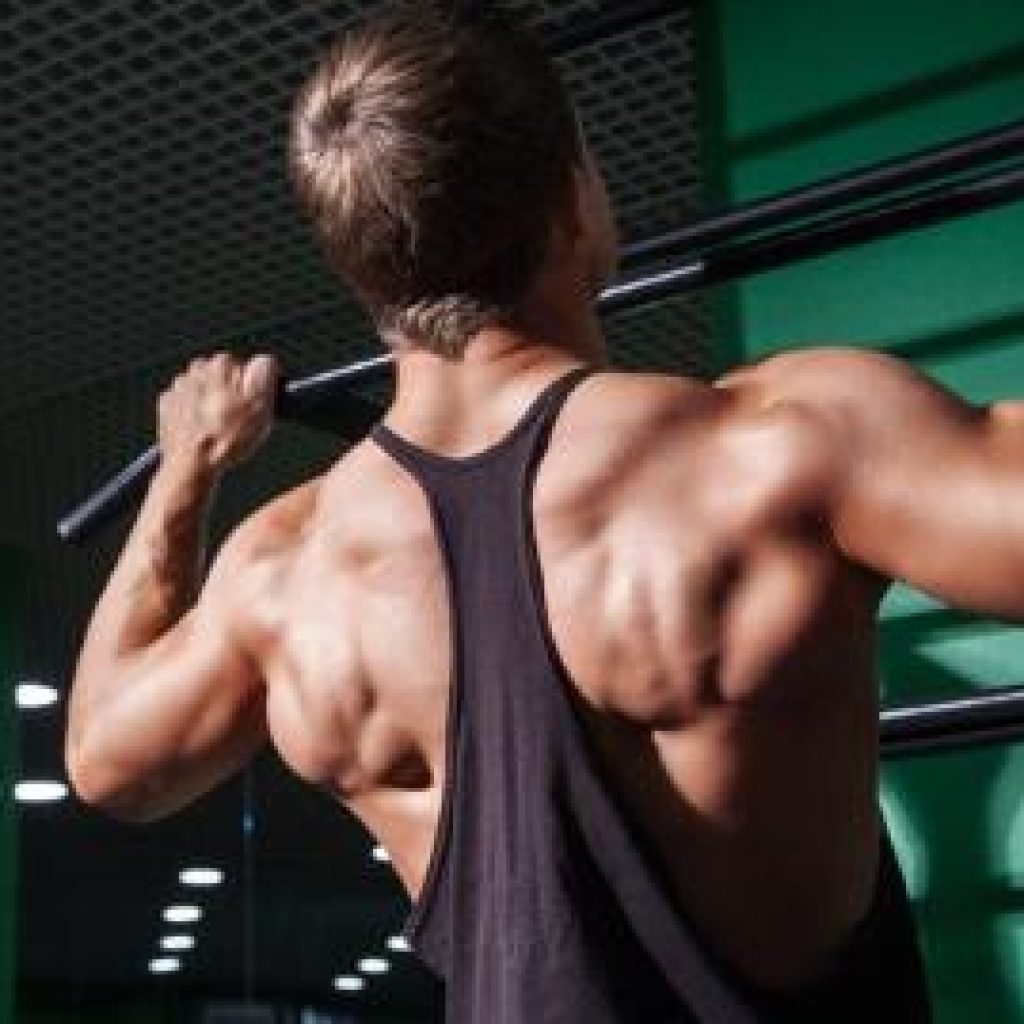No products in the cart.
10 Key Muscles that Pull-ups Develop

Pull-ups are a great full body exercise that works multiple muscles and increases overall strength. Learn which muscles pull-ups stimulate.
Pull-ups are one of the most complete and functional upper body movements to add to any exercise plan. This simple yet effective exercise can reap benefits for elite athletes, weekend warriors, and people needing upper extremity strength for physical job-related tasks. One of the main advantages of pull-ups is that you can do them in any location that has an overhead bar.
Pull-ups challenge your strength and stamina. As a true bodyweight exercise, pull-ups combine both a muscular strength and cardiovascular anaerobic component, thus firing up the bodies fat burning furnace. Pull-ups not only build your upper body, but they also strengthen your core, which helps to improve trunk stability and posture.
The primary reason that pull-ups are such a fantastic exercise lies in the number of muscles engaged in the movement. Pull-ups employ each of the following ten muscle groups, listed below in the order of their degree of involvement:
1. Latissimus dorsi: This muscle runs down the middle of the back. One of the largest muscles in the region, it begins at the seventh thoracic vertebrae in the spine and inserts at the humerus (upper arm bone). The function of the latissimus dorsi is to flex, which adducts, extends, and rotates the arm.
2. Biceps brachii: The primary muscle in the front of the upper arm. The biceps brachii has two heads; one is long, and one is short. The short head begins at the top of the scapula, and the long head starts at a point above the shoulder joint. Both meet at the elbow and direct the elbow and shoulder motion.
3. Infraspinatus: A triangle shaped muscle in the shoulder that is part of the rotator cuff. The infraspinatus begins at the shoulder blade and attaches to the suprascapular nerve. This muscle’s main function is to move the arm from side to side and assist with shoulder joint stability.
4. Lower trapezius: A triangle shaped muscle that is closest to the skin’s surface. The trapezius is attached to the dorsal vertebrae and extends horizontally, covering most of the upper back. The lower portion is responsible for providing support to the arms. The upper and middle sections are engaged to a greater degree when performing a chin-up.
5. Pectoralis major: The large muscles of the upper chest nearest to the skin. The pectoralis major spreads across the chest from the sternum to the shoulder joint. It controls lateral, vertical, and rotational, arm movement, as well as assisting with inhalation during respiration.
6. Erector spinae: This three-part complex consists of the iliocostal, longissimus dorsi and spinalis muscles that begin close to the sacrum and runs up the length of the back. As its name suggests, the erector spinae’s function is to help hold the spinal column right; it is also responsible for the rotation of the torso from side to side.
7. External oblique: The large outer abdominal muscle group. The external obliques are located in the trunk and start at the lower section of the ribs and extend to the pelvis. The role of the external obliques is to provide trunk rotation, aids in respiration by pulling the chest toward the abdominal cavity, and assists with spinal rotation.
8. Rhomboids: A muscle group located on top of the other main back muscles but underneath the trapezius; these maintain the attachment between the rib cage and the scapula. The rhomboid muscles begin at second through fifth thoracic vertebrae and extend to join the scapula at its medial border. Additional functions of these muscles include rotating the scapula and pulling it toward the spine.
9. Teres major: A muscle situated between the elbow and shoulder on the bottom side of the upper arm. The teres major is one of six muscles that come together to form the scapulohumeral group. The teres major’s job is to assist with movements of the upper arm by working with the latissimus dorsi to move humerus down and back during extension and provide stability for the humeral head.
10. Forearms: A group of eight individual muscles form the front of the forearm, and separate into the superficial, intermediate, and deep compartments. They work together to perform wrist and finger flexion as well as pronation.

In addition to the muscles trained in the above list, pull-ups also improve handgrip strength. Pull-ups can also be modified to work those muscles to variable degrees by simply widening or narrowing your grip.
Pull-ups are and excellent multi-joint exercise, providing strength that is transferable to other resistance training movements and functional daily activities.
